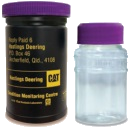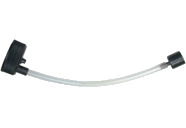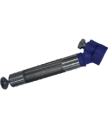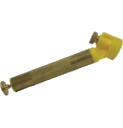Emulsion Analysis
Water-in-oil emulsions (or invert emulsions) are fire-resistant hydraulic fluids. Maintaining the correct oil-water ratio is critical to ensuring the fire resistant properties. Routine analysis monitors this characteristic along with detection of abnormal wear and other contaminants that may be detrimental to the system or fluid life.
Elemental Analysis
Elemental analysis on emulsion samples is performed using a spectrometer, similar to how this is done for coolant analysis.
This type of analysis is used to detect the presence of wear or corrosion metals, contaminants such as dirt, hard water and additive elements.
Elements typically identified through Elemental analysis are aluminium, antimony, boron, calcium, chromium, copper, iron, lead, magnesium, molybdenum, phosphorus, potassium, silicon, sodium, sulfur, tin, vanadium and zinc.
Hydrogen Ion Conc.
Hydrogen ion concentration, or pH value is a measure of the acidity of the emulsion. Water, with a pH of 7 indicates that it is neutral with regards to acidity. Low values for pH indicate high acidity and high values correspond to alkalinity.
Because modern emulsions are a various combinations of water, glycol, oils,and anti-corrosion/anti-microbial additives, normal values for pH will depend on the brand and type of emulsion and the additives present, however most have a normal pH in a range spanning 8.5 to 9.5.
Electrical Conductivity
This is a measure of the emulsion's ability to transfer an electrical charge. This in turn gives an indication of the total dissolved solids contained in the sample. If there is Glycol in the sample, the amount will have a suppresion effect on the conductivity value.
The concentration (or dilution) of the emulsion can also be inferred from the conductivity.
Additives increase the lubricating quality of the fluid.
Water by Karl Fischer
Since emulsions are largely made up of water, measuring the water content gives and indication of the amount of additives present in the emulsion solution. These additives increase the lubricating quality of the fluid, prevent corrosion and inhibit microbial growth.
Refractive Index
Refractive index is a measure of the strength (or concentration) of the emulsion. This can be used to detect if the mixture has been formulated to the correct concentration.
Microbial Contamination
Adenosine Triphosphate (ATP) is a constituent of all living cells. By measuring ATP content in a sample, we obtain a measure of the microbial activity. The advantage of ATP over tradional methods is that the test can be completed in less than 15mins, rather than waiting for up to a week for the microbes to grow on a culture medium.
The test relies on ATP reaction with luciferin/luciferase enzyme system (such as found in fireflies) which emits light proportional to the amount of ATP present.
Rapid Filtergram
Rapid Filtergrams are included in the premium emulsion sample test kits and involves analysis of the sample under a Microscope which also includes a quantification of the material, wear mechanism and size. This test will also include a representative image of the sample, as taken under the microscope, typically at 500x magnification. A graph also accompanies the image, plotting the wear mechanism against the size, showing the overall severity of the contamination.



